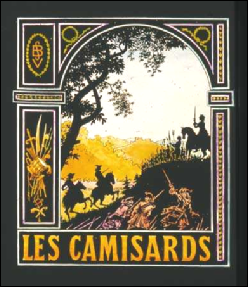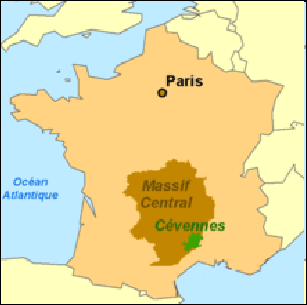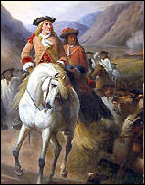


xxxxxAs we have seen, the revocation of the Edict of Nantes in 1685 (J2) put an end to any hope of religious toleration in France. Hundreds of thousands of Huguenots fled the country. The majority went to neighbouring Protestant states, like England and Germany, but some took refuge in the remote, mountainous regions of southern France. Known as the Camisards, they maintained their faith, but in July 1702, fierce fighting broke out between them and the local Catholics. The government was forced to rush in troops -
 xxxxxAs we have seen, the revocation of the Edict of Nantes by Louis XIV of France in 1685 (J2), finally brought an end to the last vestiges of religious and political toleration which had been granted to the French Protestants by Henry IV in 1598. These concessions had never been liked or fully accepted by the Roman Catholics, of course, and, over the years, they had been slowly but surely whittled down or openly ignored. For the vast majority of Protestants, the revocation of the edict was the last straw. Now denied any hope of the smallest measure of compromise or conciliation, and facing persecution as a result, hundreds of thousands fled to the neighbouring Protestant states of England, Germany and the Netherlands. Others made a new life in the English colonies of North America or settled in the Cape of Good Hope.
xxxxxAs we have seen, the revocation of the Edict of Nantes by Louis XIV of France in 1685 (J2), finally brought an end to the last vestiges of religious and political toleration which had been granted to the French Protestants by Henry IV in 1598. These concessions had never been liked or fully accepted by the Roman Catholics, of course, and, over the years, they had been slowly but surely whittled down or openly ignored. For the vast majority of Protestants, the revocation of the edict was the last straw. Now denied any hope of the smallest measure of compromise or conciliation, and facing persecution as a result, hundreds of thousands fled to the neighbouring Protestant states of England, Germany and the Netherlands. Others made a new life in the English colonies of North America or settled in the Cape of Good Hope.
 xxxxxOf those who remained in France, many took refuge in the mountainous Bas-
xxxxxOf those who remained in France, many took refuge in the mountainous Bas-
xxxxxAt Le Pont-
 xxxxxAdopting the usual response to such guerrilla tactics, the government, urged on by Pope Clement XI, resorted to a policy of extermination. More than 450 villages were destroyed and their inhabitants slaughtered. In 1704, following a government victory at Nages, an amnesty was offered, but as it did not include religious liberty, the conflict continued. The rebellion was finally crushed the following year after a number of the leading Camisards had been captured, Laporte had been killed, and Cavalier (illustrated), the movement’s ablest tactician, had fled to Switzerland. Opposition continued, but it was of a sporadic nature, and had become a spent force by 1710.
xxxxxAdopting the usual response to such guerrilla tactics, the government, urged on by Pope Clement XI, resorted to a policy of extermination. More than 450 villages were destroyed and their inhabitants slaughtered. In 1704, following a government victory at Nages, an amnesty was offered, but as it did not include religious liberty, the conflict continued. The rebellion was finally crushed the following year after a number of the leading Camisards had been captured, Laporte had been killed, and Cavalier (illustrated), the movement’s ablest tactician, had fled to Switzerland. Opposition continued, but it was of a sporadic nature, and had become a spent force by 1710.
xxxxxIncidentally, Jean Cavalier went on to fight for the British against his own country in both Portugal and Spain during 1707. He was later made a Brigadier, and in 1738 was appointed Lieutenant Governor of Jersey, attaining the rank of Major General. At one time he settled in a Huguenot colony in Dublin and it was here, in 1726, that he published his Memoires of the Wars of the Cévennes.
THE CAMISARD WAR 1702 -
Acknowledgements
Map (Massif Central): licensed under Creative Commons – en.wikivoyage.org. Cavalier: by the French artist Pierre Antoine Labouchère (1807-
AN-


